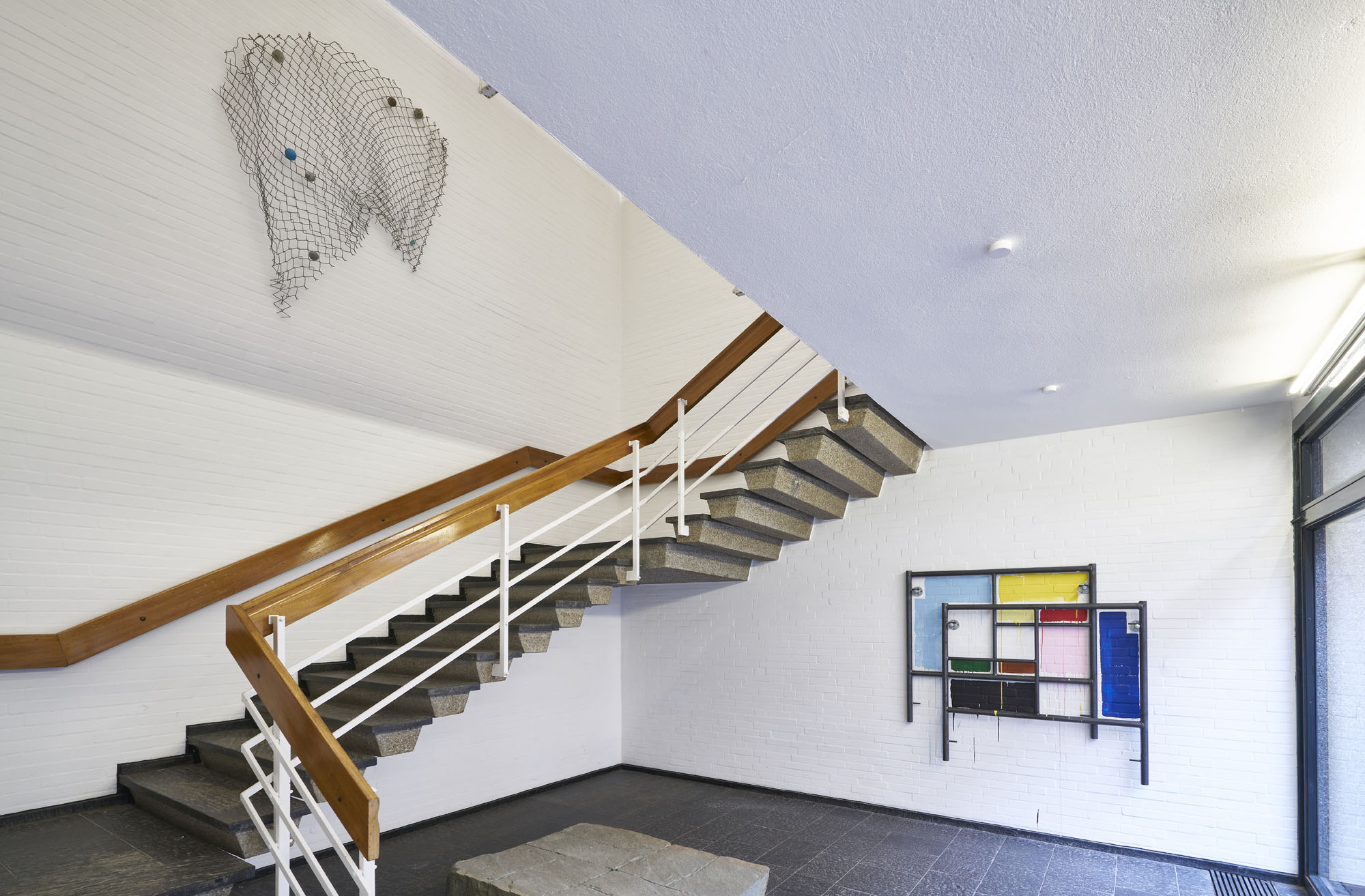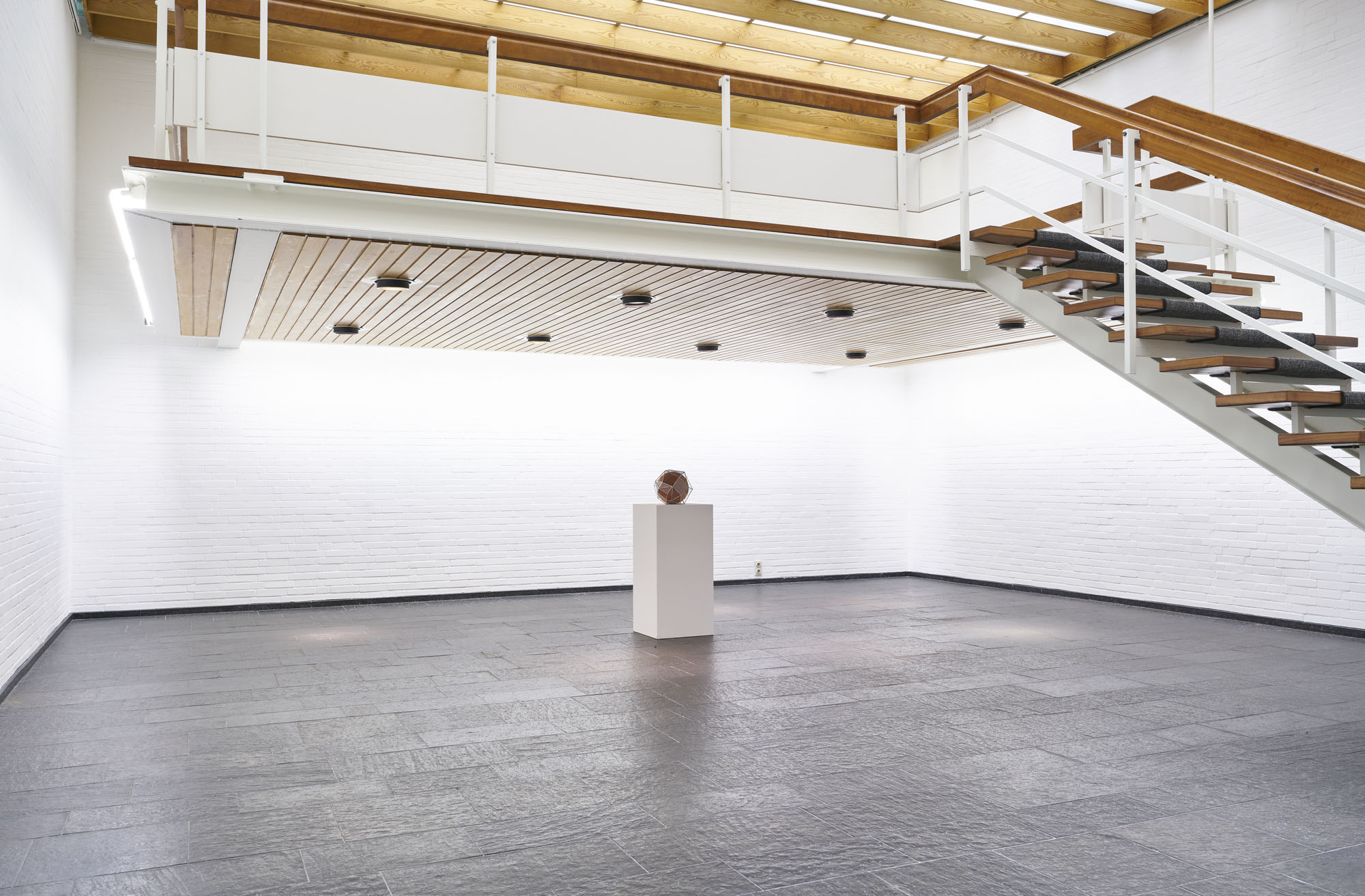Artist: Evan Robarts
Exhibition title: Direct Reflections
Venue: Kunsthalle Bremerhaven, Bremerhaven, Germany
Date: November 16, 2019 – January 5, 2020
Photography: all images copyright and courtesy of the artists, Kunsthalle Bremerhaven and Berthold Pott
Evan Robarts takes his inspiration for his works from the urban landscapes of the metropolises. The American artist pays special attention to the external processes of change in the urban core, which he observes critically. In his works gentrification, repression and disregard for social structures and cultures are reflected in critical discourse.
In his first institutional solo exhibition in Germany at the Kunsthalle Bremerhaven, these themes are reflected in large-scale installations, sculptures, wall works and wall sculptures.
In the large exhibition hall, the artist has erected one of his ‘scaffold’ installations across a corner, placed directly in front of the wall, eight meters on the long side, five meters on the short side and 3.5 meters high, reaching almost to the ceiling. The transverse and diagonal metal struts of the scaffolding produce geometric forms such as rectangles, squares and triangles. Taking up these forms, Robarts painted corresponding fields of color on the wall, mostly in primary colors, supplemented by black and a few secondary colors. Scaffolding as a symbol of architectural change is elevated here to an oversized site-specific painting. The painting of the street, the change, the image in everyday life enter into a symbiosis with the tradition of Street Art tradition, while at the same time also referring to the tradition of 1960s American Color Field painting. Almost like a memorial, the installation towers over the viewer – overwhelming and threatening at the same time – as the artist experiences this every day in his own city, on every corner, especially in the developing areas in many parts of Brooklyn.
The installation is complemented by two other artworks in the same hall. Opposite the scaffolding installation is a wall work consisting of various fragments, like a jigsaw puzzle that no longer quite fits together, measuring approximately 230 x 230 cm in total. On closer inspection, one recognizes that these are pieces of a floor covering of black and white vinyl tiles including a wooden floor, which resembles a checkerboard pattern. The artist found these ‘fragments’ in front of a house under renovation. Like relics from the past, questions arise about the history of the house and its inhabitants – relics that Robarts has now reassembled, preserved and put into new contexts, thus according them new attention and meaning.
At the end of the hall, under the large wooden gallery, stands a white plinth roughly one meter in height. On this, the artist has placed a used basketball as a readymade, framed by a lead-glazed polygon made by the hand of the artist. Like a mausoleum, it encloses the ball, which appears in many of Robarts’ works and serves him as a symbol of children’s play, of playfulness in general. Robarts finds these balls in and around the fenced-in sports courts of the city, symbol of ‘fenced-in childhoods’ and the isolation of the game, reduced to a few squares. In the corridors of the Kunsthalle are other works related to this basketball sculpture, such as a freestanding work consisting of two unfolded wire mesh fences that enclose such sports courts. Small plastic balls have become entangled in the wire mesh, hanging like flies in a spider web.
In the so-called ‘Kabinett’ of the Kunsthalle, a second, somewhat smaller exhibition space, are three sculptures from the artist’s ‘Newspeaks’ series. One of these sculptures stands on the floor while two hang on the wall, whereby one of them is placed quite high towards the ceiling and thus away from eye level. These are wire-frame newspaper racks such as those generally found in New York’s subways, which contain free newspapers. The attached metal signs reveal the names of the tabloid newspapers, ‘Epoch Week’ and ‘The Epoch Times’, which are said to have strong propaganda messages and ostensibly a close connection with the Chinese government. Robarts unfolded them like paper, transforming them into bird-like sculptures whose wings, head, and tail are recognizable despite their abstract forms. Robarts thus elevates them to flying American eagles, the USA’s national symbol of freedom, pride and grace. In connection with the dubious autonomy of these newspapers, Robarts poses questions about the freedom of the press in times of the ‘fake-news’ debate of the Trump era.
Evan Robarts (b. 1982, lives and works in Brooklyn, New York City) studied art at the Pratt Institute in Brooklyn. His work has been shown in solo and group exhibitions at Berthold Pott (Cologne), Bryce Wolkowitz (New York), The Hole (New York), the Collection Frédéric de Goldschmidt (Brussels), Bank Gallery (Beijing), the Berman Museum (Collegeville, Pennsylvania), the Centre d’Action Culturelle (Niort, France), Balice Hertling (New York), Jérome Pauchant (Paris), the National Arts Club (New York), ‘Abstraction & Architecture’ at the Université Strasbourg, and the Pratt Institute (Brooklyn). Robarts is represented in Europe by the gallery Berthold Pott in Cologne.

























